PROTECT YOUR DNA WITH QUANTUM TECHNOLOGY
Orgo-Life the new way to the future Advertising by Adpathway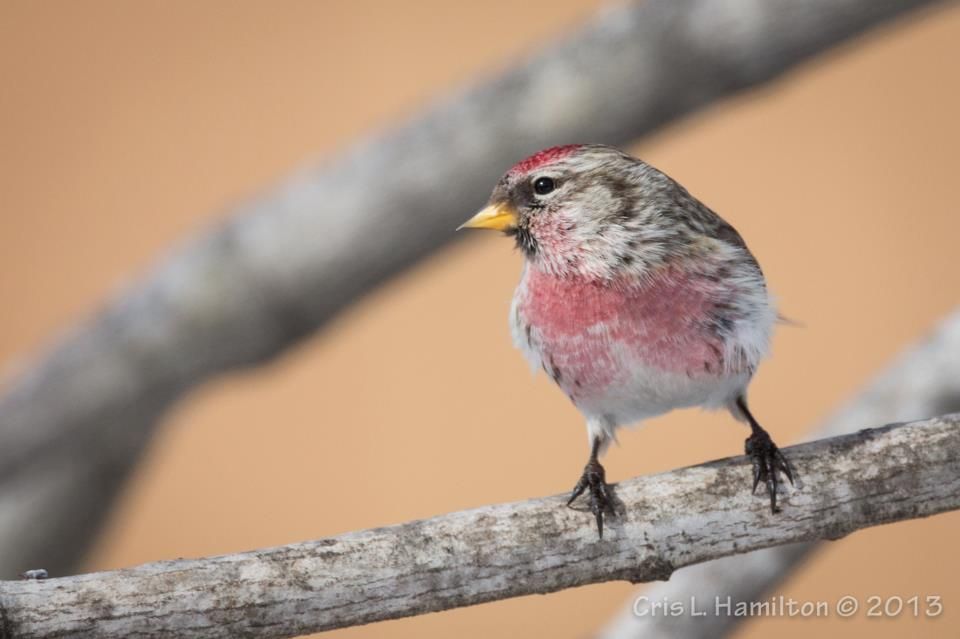 Common Redpoll (photo by Cris Hamilton)
Common Redpoll (photo by Cris Hamilton)1 October 2025
Northern finches don’t leave home for the winter unless their winter food — seeds from cones and catkins — is scarce. Last weekend the Finch Research Network published the Winter Finch Forecast 2025-2026, that predicts which northern finches will visit lower Ontario and perhaps the U.S. The news looks good for an irruption this winter.
It looks to be a flight year for many species in Eastern Canada. With mostly very poor crops in the boreal forest from central Quebec westward to Manitoba, this has the potential of being the biggest flight year since 2020-2021.
— The Winter Finch Forecast 2025-2026
Red-breasted nuthatches (Sitta canadensis) are a great indicator of an irruption year and are already in Pittsburgh since September. They resemble their white-breasted cousins but are smaller, red-breasted (of course), prefer conifers, and make a nasal “ank, ank” sound.
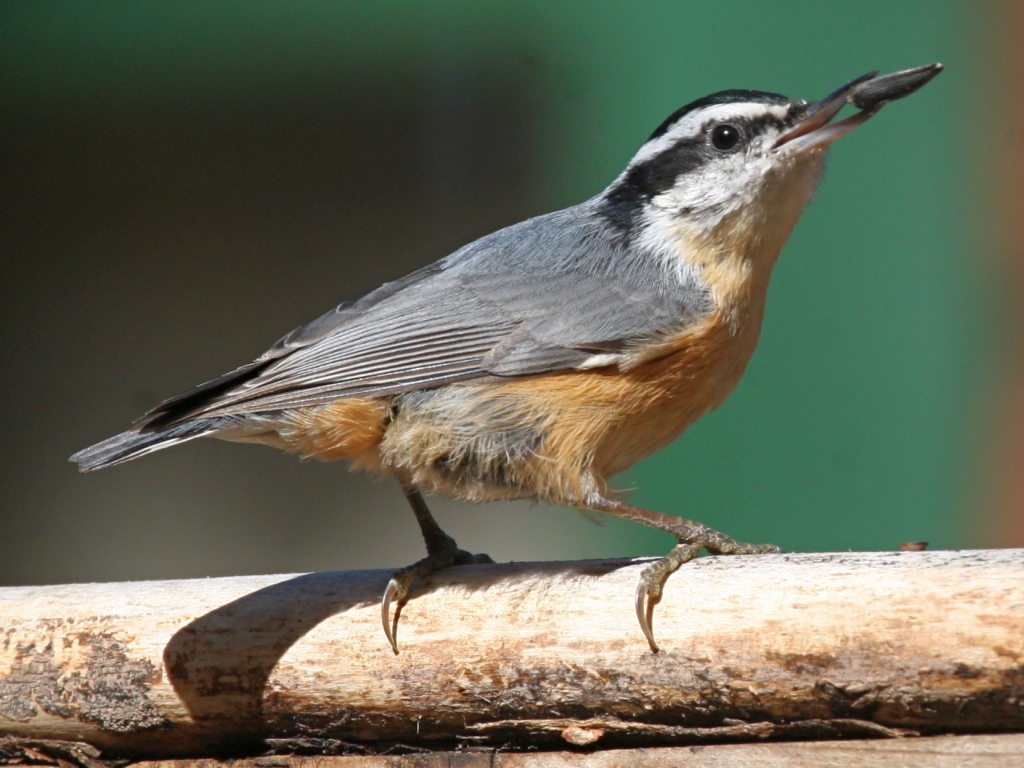 Red-breasted nuthatch (photo by Chuck Tague)
Red-breasted nuthatch (photo by Chuck Tague)Purple finches (Haemorhous purpureus): “Most Purple Finches will migrate south out of Eastern Canada this winter with some making it to the deep southern States.” These finches look a lot like the house finches that come to your feeders year round so be careful when you identify one. Here’s how to tell the difference –> Purple and House.
The male looks he was dipped headfirst in berry juice. All of his belly stripes are rosy pink (not taupe).
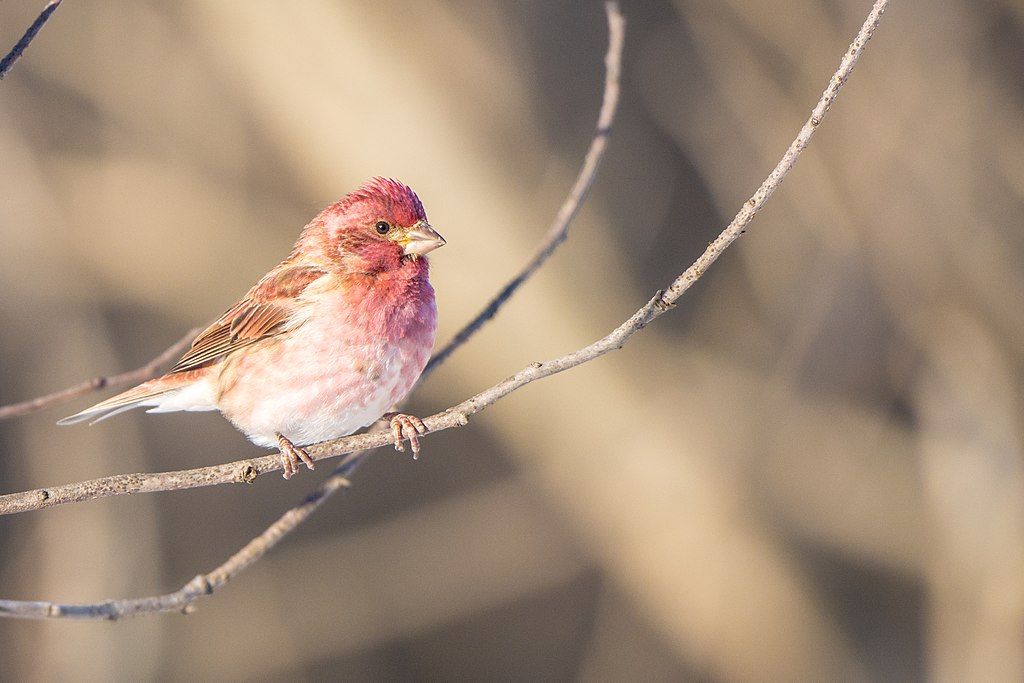 Purple finch in Ohio (photo from Wikimedia Commons)
Purple finch in Ohio (photo from Wikimedia Commons)The female purple finch looks like an unusually dark house finch with a big beak. Her belly stripes are thick and brown (not taupe).
 Female purple finch (photo by Chuck Tague)
Female purple finch (photo by Chuck Tague)Pine siskins (Spinus pinus) visited in 2020-2021 and are predicted again this winter. “A moderate to possibly strong flight of siskins will move southward, possibly as far south the mid Atlantic states.” Pine siskins are small, very stripey, have yellow accents on their wings and tail and thin sharp beaks.
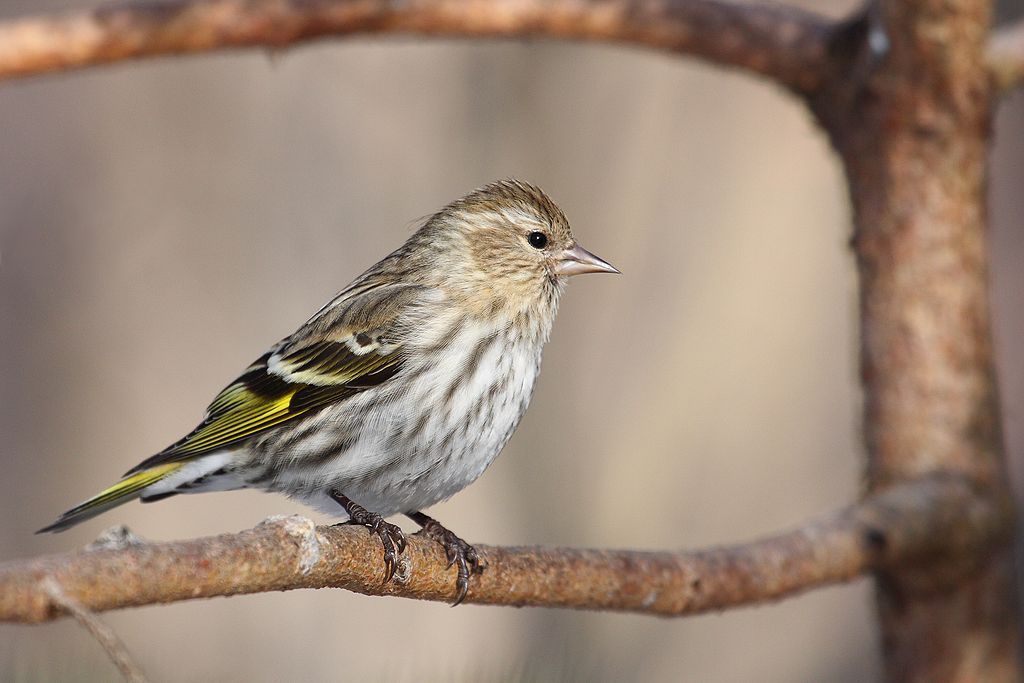 Pine siskin in Canada (photo from Wikimedia Commons)
Pine siskin in Canada (photo from Wikimedia Commons)They like the same food as American goldfinches but are significantly smaller.
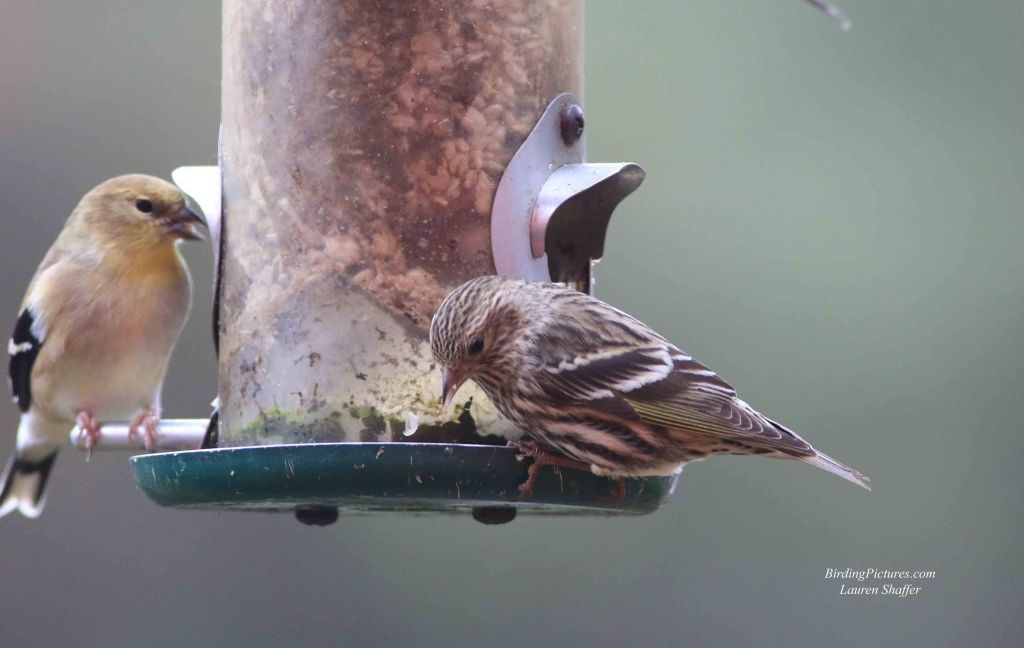 Pine siskin at feeder with American goldfinch (photo by Lauri Shaffer)
Pine siskin at feeder with American goldfinch (photo by Lauri Shaffer)Redpolls (Acanthis flammea): “Expect a probable strong flight south out of the boreal forest east of Lake Superior southward into the lower great lakes, eastward through northern New York, New England and the Maritimes.”
There is only one redpoll species now (Common, Hoary, Lesser were lumped in 2024). Sometimes they look rosy as shown at top. Sometimes plainer.
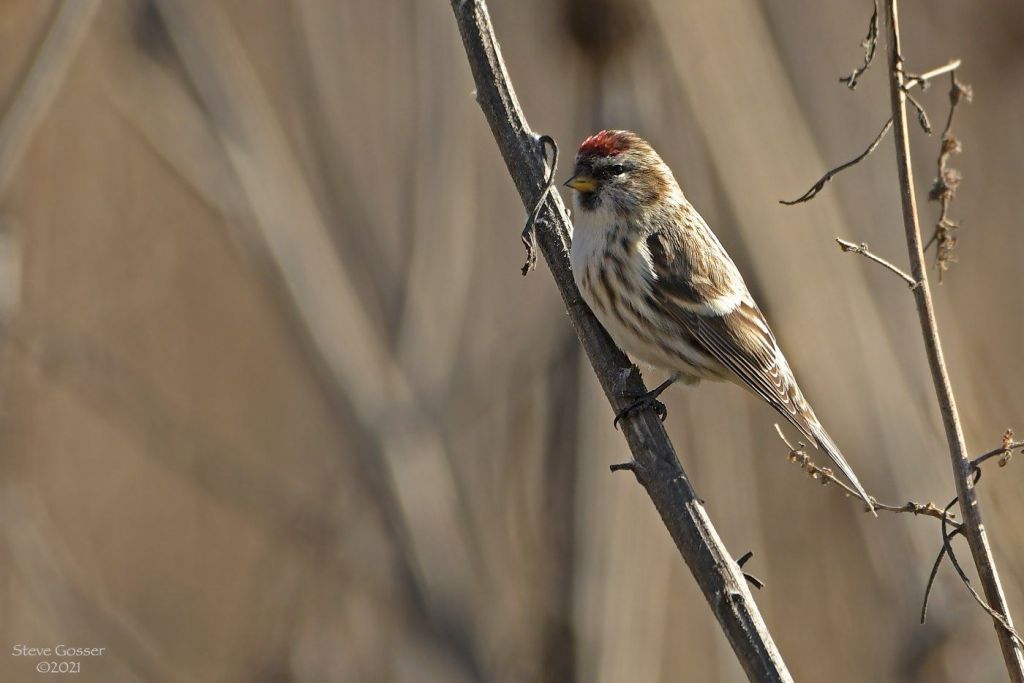 Redpoll in October 2021 (photo by Steve Gosser)
Redpoll in October 2021 (photo by Steve Gosser)You’ll find them on birches anywhere (even in urban areas), in weedy fields and at bird feeders offering nyjer®and black oil sunflower seeds.”
Evening grosbeaks (Coccothraustes vespertinus) “There should be a moderate flight of Evening Grosbeaks southward this fall. A few birds are likely make it to Pennsylvania and perhaps the higher elevations of the Mid-Atlantic States as well.”
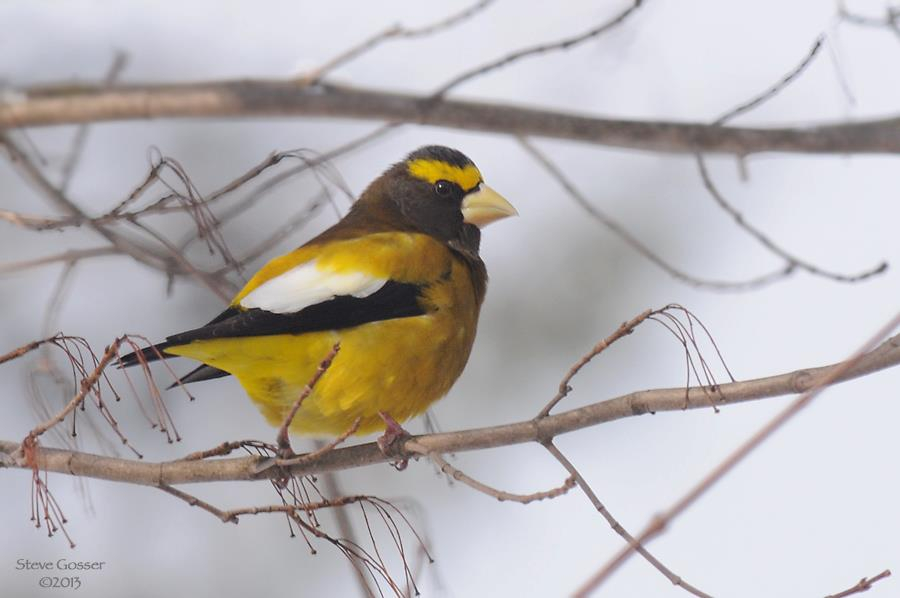 Evening grosbeak, January 2013 (photo by Steve Gosser)
Evening grosbeak, January 2013 (photo by Steve Gosser)So keep your eyes peeled this winter. New birds are coming south.



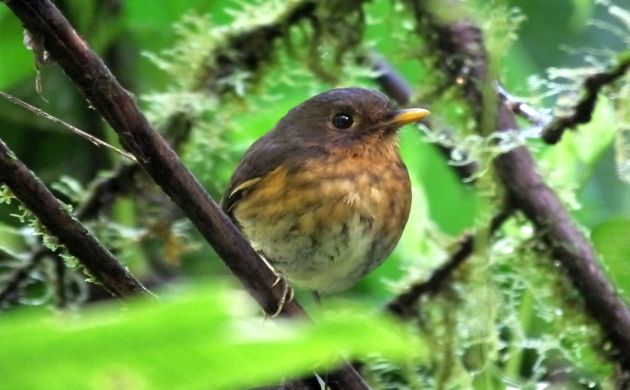



















 English (US) ·
English (US) ·  French (CA) ·
French (CA) ·